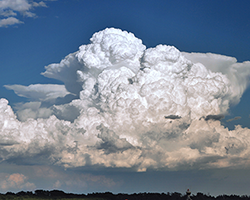Tropical Western Pacific – International Cloud Experiment (TWP-ICE)
In tropical regions, thin, wispy cirrus clouds cover very large areas and
can indicate that a powerful storm is on the way. These
high-altitude clouds also impact climate by reflecting incoming
solar energy and absorbing infrared energy emitted by the
Earth's surface and by the atmosphere. Researchers want to learn more about the
composition of clouds to help improve cloud-measuring methods and weather
and climate models.
TWP-ICE was a cloud study held near Darwin, Australia during the wet season
(November 2005 through March 2006). Researchers collected measurements of clouds, precipitation, raindrops, and other meteorological
variables from the ground to the lower stratosphere using equipment such as vertically-pointing
profiling radars, rain gauges, and disdrometers.
Vertically-pointing radars provide information on the vertical
structure of raincloud systems as they pass directly
overhead. These observations are converted into estimates of the number and size of
raindrops falling in the rain. This information provides insight into the
microphysical processes occurring within the systems.
The observations, retrieved raindrop size distributions, and images are available through the data link at right.
Sponsors
|

Example of Convective Clouds
|
|
|
|